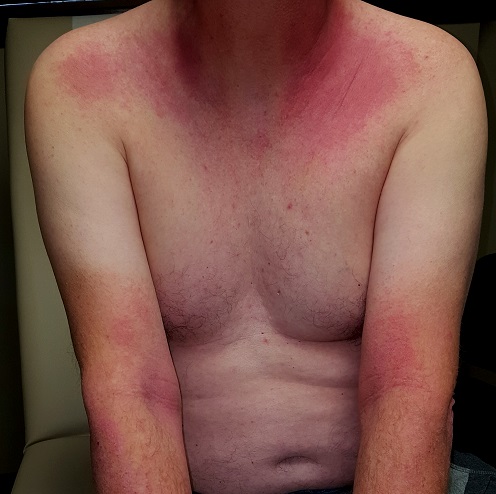A 49-year-old man presents to dermatology for evaluation of an itchy rash that manifested several months ago. Attempts to eradicate or ameliorate it—which have included topical and systemic steroids and oral antibiotics (minocycline)—have had no effect. A biopsy ordered by his primary care provider (PCP) showed nonspecific changes, termed “dermatitis” in the report.
The patient denies any history of atopy, such as seasonal allergies or eczema. His only medical problem is moderate hypertension, for which his PCP prescribed hydrochlorothiazide. He started taking the drug a few weeks before the rash appeared.
He claims to be in good health otherwise, with no weakness or weight loss. He has never smoked.
EXAMINATION
A bright red, blanchable, maculopapular rash is notably confined to the patient’s sun-exposed skin; it sharply spares the areas covered by clothing and the watch on his left wrist. His palms, soles, scalp, and face are also spared. No nail changes are noted.
Otherwise, the patient appears well and is able to rise from a seated position without difficulty. No nodes are palpable in the head or neck, and there is no organomegaly detected on abdominal examination.
What is the diagnosis?

